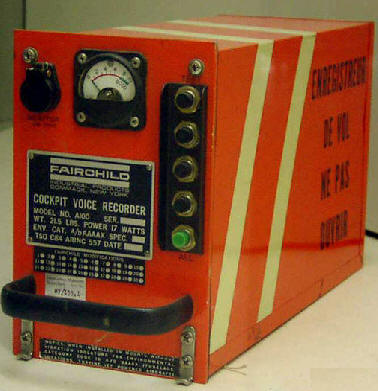
| NEWSROOM |
|
|
 |
|
|
|
|
|
|||
|
By Daniel Baxter |
||||
 |
February 25, 2010 - In the wake of a number of airline accidents and incidents the NTSB is now calling for the FAA to put in place regulations that would require airlines to monitor cockpit conversations on a regular bias and provide for protection of those recordings from public disclosure. "In the Colgan report, the Safety Board recommended that all available sources of information be downloaded and analyzed on a routine basis. Numerous Safety Board investigations have identified the performance of the crew as causal or contributing to the accident. Over the last decade, data monitoring has resulted in measurable safety improvements for equipment and operations." “Because FOQA has been credited with driving down the accident rates in commercial aviation, it is essential to understand what is going on in the cockpit if we are to achieve further reductions. The benefits attained from the CVR should not be limited to posthumous investigations,” said Debbie Hersman, Chair of the National Transportation Safety Board (NTSB). |
|||
|
The National Transportation Safety Board determined that the probable cause of this accident was the captain’s inappropriate response to the activation of the stick shaker, which led to an aerodynamic stall from which the airplane did not recover. Contributing to the accident were (1) the flight crew’s failure to monitor airspeed in relation to the rising position of the lowspeed cue, (2) the flight crew’s failure to adhere to sterile cockpit procedures, (3) the captain’s failure to effectively manage the flight, and (4) Colgan Air’s inadequate procedures for airspeed selection and management during approaches in icing conditions. The NTSB retrieved and
analyzed the black box on Flight 3407. Voice recordings on the black
box indicated both pilots engaged in conversations that were not
appropriate, their conversation distracted them from being able to
appropriately monitor aircraft systems and those conversations had
taken place below 10,000 feet (Transcript
Of Last Words Aboard Flight 3407 |
||||
|
FAA Part 135.100 Flight crewmember duties. (a) No certificate holder shall require, nor may any flight crewmember perform, any duties during a critical phase of flight except those duties required for the safe operation of the aircraft. Duties such as company required calls made for such nonsafety related purposes as ordering galley supplies and confirming passenger connections, announcements made to passengers promoting the air carrier or pointing out sights of interest, and filling out company payroll and related records are not required for the safe operation of the aircraft. (b) No flight crewmember may engage in, nor may any pilot in command permit, any activity during a critical phase of flight which could distract any flight crewmember from the performance of his or her duties or which could interfere in any way with the proper conduct of those duties. Activities such as eating meals, engaging in nonessential conversations within the cockpit and nonessential communications between the cabin and cockpit crews, and reading publications not related to the proper conduct of the flight are not required for the safe operation of the aircraft. (c) For the purposes of this section, critical phases of flight includes all ground operations involving taxi, takeoff and landing, and all other flight operations conducted below 10,000 feet, except cruise flight. On Wednesday, October 21, 2009, an Airbus A320,
operating as
Northwest
Airlines (NWA) flight 188, became a NORDO (no radio communications)
flight at 37,000 feet. The flight was operating as a Part 121 flight
from Both pilots were interviewed
separately by NTSB investigators, the following is an overview of the
interviews: The discussion began at cruise altitude. Both said they lost track of time, each pilot accessed and used his personal laptop computer while they discussed the airline crew flight scheduling procedure. The first officer, who was more familiar with the procedure, was providing instruction to the captain. The use of personal computers on the flight deck is prohibited by company policy. Neither pilot was aware of the airplane's position
until a flight attendant called about 5 minutes before they were
scheduled to land and asked, “what was their estimated time of arrival.” When asked by ATC what the problem was, they replied,
"just cockpit distraction" and, "dealing with company issues." The CVR recording was 1/2 hour in length. |
| ©AvStop
Online Magazine
Contact
Us
Return To News
|
|